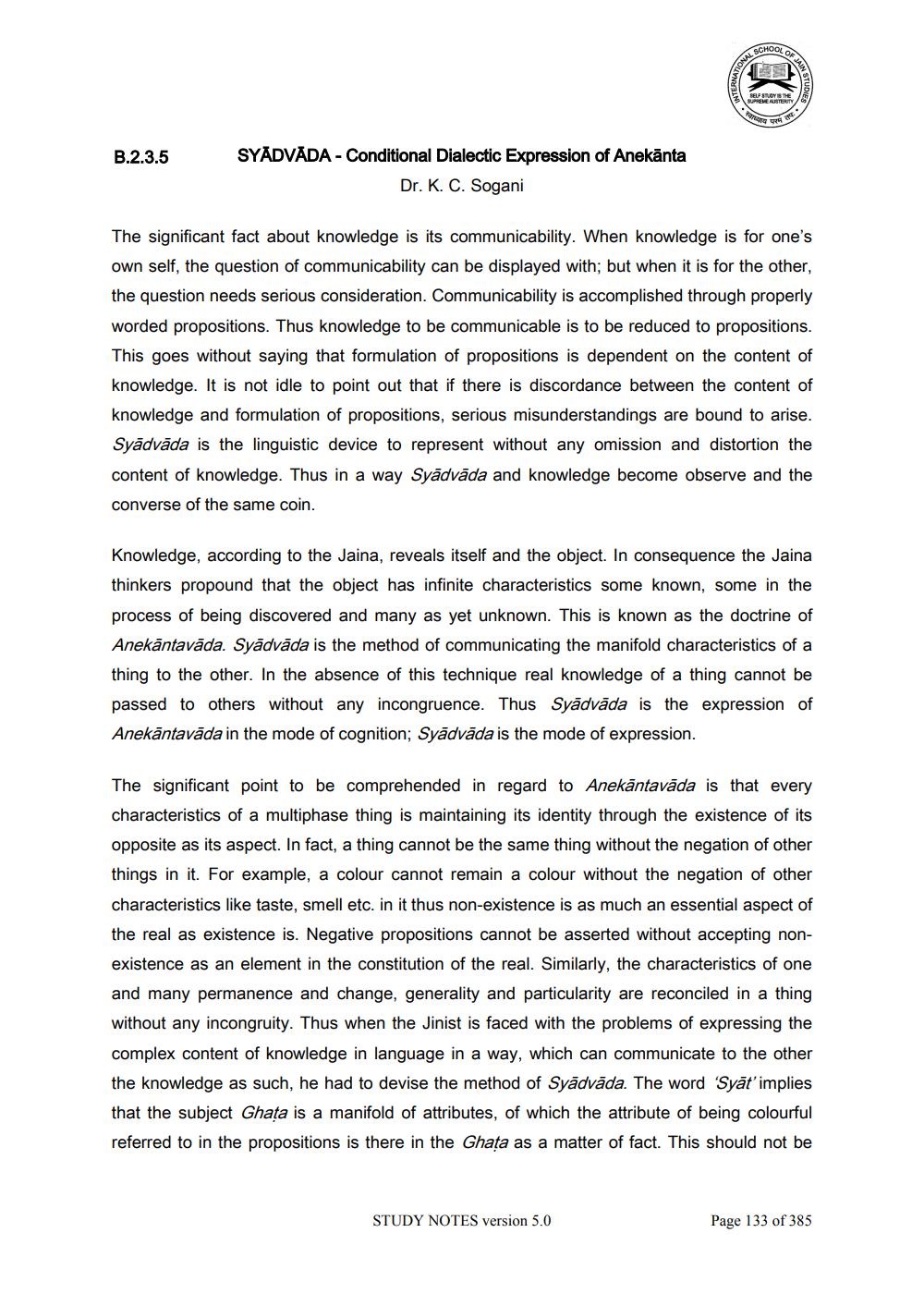________________
B.2.3.5
SYADVADA-Conditional Dialectic Expression of Anekanta Dr. K. C. Sogani
SCHOOL
OF
SELF STUDY IS THE SUPREME AUSTERITY
स्वाध्याय
The significant fact about knowledge is its communicability. When knowledge is for one's own self, the question of communicability can be displayed with; but when it is for the other, the question needs serious consideration. Communicability is accomplished through properly worded propositions. Thus knowledge to be communicable is to be reduced to propositions. This goes without saying that formulation of propositions is dependent on the content of knowledge. It is not idle to point out that if there is discordance between the content of knowledge and formulation of propositions, serious misunderstandings are bound to arise. Syadvāda is the linguistic device to represent without any omission and distortion the content of knowledge. Thus in a way Syadvāda and knowledge become observe and the converse of the same coin.
STUDY NOTES version 5.0
Knowledge, according to the Jaina, reveals itself and the object. In consequence the Jaina thinkers propound that the object has infinite characteristics some known, some in the process of being discovered and many as yet unknown. This is known as the doctrine of Anekantavāda. Syadvāda is the method of communicating the manifold characteristics of a thing to the other. In the absence of this technique real knowledge of a thing cannot be passed to others without any incongruence. Thus Syādvāda is the expression of Anekantavāda in the mode of cognition; Syadvāda is the mode of expression.
The significant point to be comprehended in regard to Anekantavāda is that every characteristics of a multiphase thing is maintaining its identity through the existence of its opposite as its aspect. In fact, a thing cannot be the same thing without the negation of other things in it. For example, a colour cannot remain a colour without the negation of other characteristics like taste, smell etc. in it thus non-existence is as much an essential aspect of the real as existence is. Negative propositions cannot be asserted without accepting nonexistence as an element in the constitution of the real. Similarly, the characteristics of one and many permanence and change, generality and particularity are reconciled in a thing without any incongruity. Thus when the Jinist is faced with the problems of expressing the complex content of knowledge in language in a way, which can communicate to the other the knowledge as such, he had to devise the method of Syādvāda. The word 'Syat' implies that the subject Ghata is a manifold of attributes, of which the attribute of being colourful referred to in the propositions is there in the Ghata as a matter of fact. This should not be
Page 133 of 385




